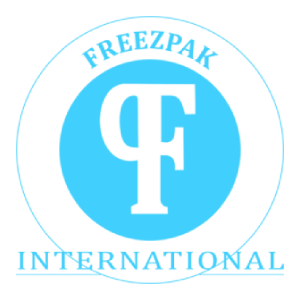
How to pack temperature sensitive goods : Best tools & techniques
Shipping temperature-sensitive goods whether it’s vaccines, fresh seafood, or frozen desserts takes thoughtful planning and smart tools. In hot places like Dubai, where temperatures often rise above 45 °C (113 °F), relying on a “cooler and good luck” mindset just doesn’t cut it. But with the right materials, techniques, and partners like Freezpak UAE you can maintain product quality and protect your reputation.
Understanding What “Temperature-Sensitive” Really Means
Temperature-sensitive goods need to stay within a specific temperature band to stay safe and effective. Stray outside that range even briefly and you risk spoilage, reduced potency, or worse. Common examples include:
Pharmaceuticals: Vaccines, insulin, biologics often require 2°C to 8°C.
Food & Beverage: Meat, seafood, dairy, ice cream must stay chilled or frozen.
Chemicals: Some reagents or lab chemicals break down or become unsafe out of spec.
Cosmetics & Skincare: Particularly those with active ingredients that degrade when exposed to heat.
Schedules, transit times, and climate all influence how you pack. Especially in Dubai’s soaring heat, generic boxes won’t cut it.
Why Temperature Matters: The Science Behind It
Why are some goods so vulnerable?
Heat can accelerate chemical reactions, degrade active ingredients, or fuel microbial growth.
Cold can damage products not designed for freezing, think shattered glass or mushy fruit.
Temperature swings are often worse than a steady warm or cold; they stress the product unpredictably.
That’s where gadgets like data loggers and indicators become invaluable they reveal exactly when, where, and how your cold chain may have broken.
Smart Choices: Packaging Materials You Can Trust
Insulated Containers
Materials like foam (EPS), polyurethane, or vacuum-insulated panels help slow thermal transfer.
Gel Packs
Great for keeping products chilled in the 2°C–8°C range without toxicity. Ideal for pharmaceuticals, food, and lab samples.
Dry Ice
Excellent when you need sub-zero temps (down to –78.5°C), but you must follow safety rules and airline regulations.
Always match your choice to travel time, ambient conditions, product temperature needs, and whether transit may be delayed.
Tools that help you stay in control
Data Loggers: Record temperature throughout transit and pinpoint where things went wrong.
Real-Time Monitors: Update you instantly great when you’re shipping highly sensitive goods.
Packing techniques that work
Layer Properly: Start with a pad of coolant at the bottom, nest your products in the center, then add more coolant on top. Use separators to prevent shifting.
Eliminate Air Gaps: Air transfers heat. Fill empty space with foam or bubble wrap to keep temperature steady and reduce shifting.
Seal Everything Tightly: Use industrial-grade tape on every seam. Double-tape edges. Add tamper-evident seals or labels for clarity.
Label Clearly: Include storage temperature, handling directions, and notices like “Dry Ice” if applicable. This ensures handlers know the product’s needs.
Plan for Delay: Always pack for the longest possible journey—not just the expected one. Delays happen, especially across customs or during seasonal peaks.
How cold chain logistics actually work
Storage: Your goods begin in a climate-controlled facility kept consistently chilled or frozen.
Pre-Conditioning: Product and packaging should be cold before shipping begins. Skipping this step increases early heat ingress.
Transportation: Refrigerated trucks, containers, and even cargo planes keep everything in range as it’s moved.
Monitoring & Tracking: GPS-enabled systems paired with thermal sensors let you track temp and location in real-time.
Last-Mile Handling: Even final delivery matters use insulated vans or thermal bags to ensure items don’t sit in the heat.
Every link matters, weakness anywhere breaks your chain.
Why Partnering with Experts Makes a Difference
Experience: Experts know local challenges including high ambient temps and customs requirements.
Infrastructure: They offer certified cold storage, temperature-controlled vehicles, and validated packaging.
Support & Compliance: They can guide you on documentation, labelling, and audit-readiness.
FreezePak UAE, for example, delivers specialized solutions tailored to Dubai’s weather, offering real-time tracking, optimized routes, and compliant packaging systems.
What to Watch for: Common Mistakes
Packing only for expected time and not buffering for delays.
Using gel packs when dry ice or PCMs are needed.
Fuzzy or missing labels leading to mishandling.
Reusing damaged or punctured containers that compromise insulation.
Skipping proper documentation especially with pharmaceuticals or chemicals.
Avoiding these mistakes keeps your shipments clean, compliant and helps protect your brand’s reputation.
Real-World Example: Seafood in Dubai
A local distributor needed to ship frozen salmon at –18 °C across retail locations. Standard coolers weren’t enough in 45 °C summer heat. By using:
Pre-conditioned insulated containers
Refrigerated trucks
Live temperature tracking
Approximate staging in freezer zones
They reduced product loss by 95%, expanded into hotels and supermarkets, and gained a reputation for reliability. Cold chain success was built on local know-how, solid infrastructure, and smart packaging.
Staying Green: Emissions & Sustainability
You can reduce your environmental footprint by optimizing routes to save fuel, using electric refrigerated vehicles, and choosing coolants with low environmental impact. Aligning with sustainable partners shows you care for your goods and the planet.
What’s Next in Cold Chain Tech?
Smart Packaging: Embedded with sensors that track temperature, humidity, and rough handling and alert you instantly via app.
Machine Learning & AI: Predict delays or temperature risk and suggest smarter routing or packing changes.
Blockchain: Provides transparent, unchangeable records great for regulated goods or multi-step supply chains.
Eco-Friendly Refrigerants: Low global-warming coolants are becoming standard and are often part of cold chain upgrades.


